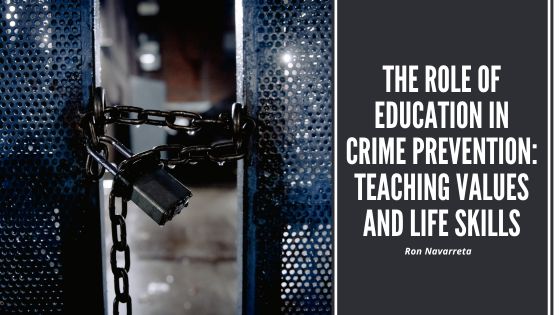Education is a powerful tool in the fight against crime. Beyond imparting knowledge, education plays a critical role in crime prevention by teaching values and life skills that help individuals make better choices and lead productive, law-abiding lives.
1. Building Strong Moral Foundations
Education provides a platform for instilling moral values and ethics in individuals from a young age. Schools and educational institutions can emphasize the importance of honesty, integrity, respect, and empathy. When children and young adults internalize these values, they are less likely to engage in criminal behavior or unethical conduct.
2. Enhancing Decision-Making Skills
Education equips individuals with critical thinking and decision-making skills. These skills are essential in evaluating the consequences of one’s actions and making informed choices. By empowering people to weigh the pros and cons of their decisions, education helps them avoid impulsive and potentially criminal behavior.
3. Promoting Empathy and Social Awareness
Educational environments foster social interaction and teach individuals to empathize with others. By understanding the perspectives and struggles of different people, students develop a greater sense of social responsibility. This empathy can deter them from harming others or engaging in criminal acts that negatively affect the community.
4. Teaching Conflict Resolution
One of the key aspects of education is teaching conflict resolution strategies. Schools provide a safe space for students to learn how to resolve disputes through dialogue, negotiation, and compromise rather than resorting to violence or criminal behavior. These conflict resolution skills can be applied throughout life, reducing the likelihood of engaging in criminal acts during conflicts.
5. Expanding Economic Opportunities
Education is often linked to improved economic prospects. Individuals with higher levels of education generally have access to better job opportunities and higher incomes. Economic stability can reduce the incentive for individuals to turn to criminal activities as a means of survival.
6. Reducing Dropout Rates
Low educational attainment is a risk factor for criminal involvement. Dropout rates have been correlated with higher rates of criminal activity. By promoting education and creating supportive learning environments, communities can reduce the number of students who drop out, thereby decreasing the pool of potential offenders.
7. Encouraging Positive Role Models
Educational institutions can introduce students to positive role models who inspire them to pursue productive paths in life. Teachers, counselors, and mentors can play a vital role in shaping a student’s values and aspirations, steering them away from criminal influences.
8. Raising Awareness of Legal Consequences
Education provides an opportunity to educate students about the legal consequences of criminal behavior. By understanding the potential penalties and repercussions of unlawful actions, individuals are more likely to think twice before engaging in criminal activities.
9. Offering Rehabilitation and Second Chances
Education also plays a role in rehabilitating individuals who have been involved in criminal activities. In correctional facilities and through adult education programs, individuals can acquire new skills, improve their education, and gain the tools they need to re-enter society as law-abiding citizens.
10. Encouraging Civic Engagement
Education encourages civic engagement and participation in community activities. Engaged individuals are more likely to be invested in the well-being of their communities and less likely to engage in criminal behavior that may harm their neighbors or fellow citizens.
11. Targeting At-Risk Youth
Educational initiatives can be specifically designed to target at-risk youth who may be more susceptible to criminal influences. Programs that provide extra support, mentorship, and intervention can help redirect these individuals toward positive life paths.
12. Strengthening Family Units
Education can also contribute to stronger family units by providing parents with the tools and knowledge they need to support their children’s development. Strong family bonds and positive parenting can reduce the likelihood of children becoming involved in criminal activities.
13. Fostering a Culture of Lawfulness
A culture of lawfulness can be cultivated through education. This involves instilling a sense of respect for the law and legal institutions. When individuals understand and respect the legal system, they are more likely to uphold its principles and avoid criminal behavior.
14. Encouraging Positive Peer Influence=
Educational settings enable students to form friendships and social connections. When schools emphasize positive values and behavior, students are more likely to exert positive peer pressure on their peers, discouraging criminal activities within their social circles.
15. Promoting Lifelong Learning
Education is not limited to formal schooling but encompasses a lifelong commitment to learning and personal growth. When individuals continue to pursue knowledge and personal development, they are more likely to make positive choices and stay engaged in constructive activities throughout their lives.
Education plays a crucial role in crime prevention by teaching values, life skills, and social responsibility. Through education, individuals are empowered to make informed decisions, resolve conflicts peacefully, and develop a strong moral foundation. Ultimately, investing in education as a crime prevention strategy is an investment in building safer, more cohesive communities where individuals are empowered to lead law-abiding lives.

